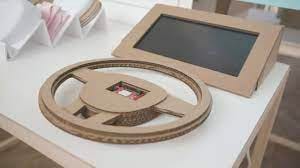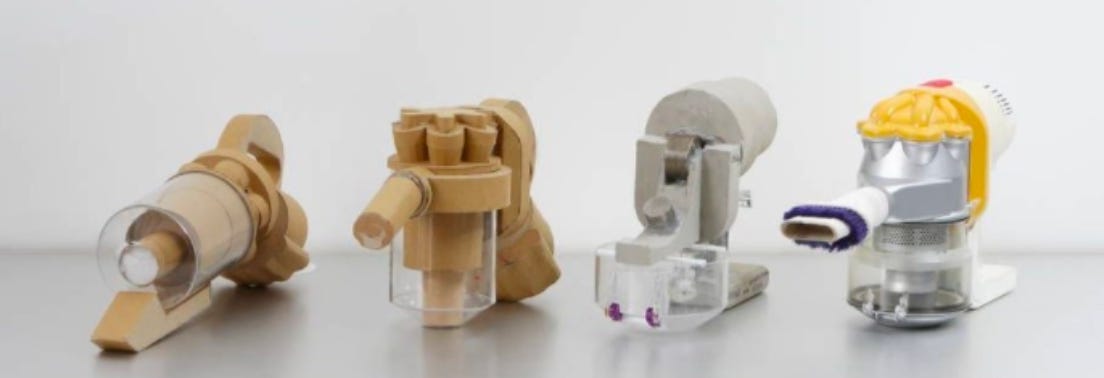Using Personal Prototyping to Make Big Life Decisions
The key to defeating “Analysis Paralysis” is to run a series of very low-cost experiments that will reveal to us how we actually feel about a career option
What Keeps Most of Us Up At Night…
Last week I was on a call with a reader who had just been part of a massive company layoff. He was asking for some career advice and trying to determine where he should pivot next professionally. As I looked at his resume, I pointed out that it was hard for me to see what the connecting story was / where he wanted to go with his career. He had a wide variety of impressive experiences: He had been a successful musician/choir conductor, a Chief of Staff at a Startup, gotten an MBA, and worked as a Financial Analyst.
As we discussed different options for his career moving forward, I finally asked “What is your “Point Z?” Where do you ultimately want to end up professionally?”
This, he confessed, was something he had been struggling to answer for quite a while. Despite being very talented, he didn’t know the answer yet and was hesitant to commit to a path that he wasn’t certain would end up in a career he would ultimately be happy with.
That isn’t at all surprising and is not something anyone should be embarrassed by. Almost every single one of us didn’t (or still don’t) know what we wanted to be when we grew up. I personally had a winding career path: first starting out as an engineer, then a consultant, and now a corporate strategist. Heck, I even wanted to be a history professor back in high school! It was only very recently that I felt like I found “my fit” in strategy.
Finding out what our “professional calling” is can be one of the most daunting questions we ever answer for ourselves. It’s honestly the main reason many people go back to graduate school, especially generalist programs like MBAs where everyone is really just using 2 years to explore a wide variety of options to find out what they really like.
Consulting is no different. The common joke among consultants is that consulting is the perfect job for high achievers who still don’t know what they want to be when grow up.
It’s not easy figuring out what you want to do with your life.
All of us struggle with deciding between 2 (or more) great opportunities. Whether it is puzzling over offers from both Amazon and Microsoft, choosing to join Deloitte’s San Francisco or Boston office, deciding whether to attend Duke or MIT’s MBA programs, or even choosing whether to accept a relatively stable role with a F500 company or start a small business with some friends, the process can feel overwhelming.
The core of this is our fear that we’ll end up choosing the wrong road. Ending up years later in a job that we hate, or looking back on missed opportunities. FOMO reigns supreme and fuels our anxiety. We know that our time is precious are so hesitant to spend valuable months or years on a track that may end up in a dead end. The result is “analysis paralysis” or a life of “hugging the X-axis”.
Fortunately, there is a way around this. And that involves borrowing a Product Development tool called Rapid Iterative Prototyping (RIP) and applying it to our personal lives.
The Life Decision Prototype Framework
Daniel Snow, former Harvard/Oxford professor and current Dean of Brigham Young University’s MBA program (and also a good friend), wrote several years ago about how to use “Personal Prototyping” to make difficult career decisions. His full article is here (and is one that I highly recommend reading). But I wanted to summarize the key points below. It’s been one of the best frameworks that I’ve ever used to grapple with my own big pivot points.
Rapid Iterative Prototyping (RIP)
Here’s how RIP works. In most businesses, a smart product team will come up with a “prototype” that is a very simple, cheap, and incomplete version of an idea. The whole purpose of a prototype is to use quick-and-dirty experimenting to reduce uncertainty by exposing an idea to the market and to get feedback on what works vs. what doesn’t.

A great example is when IDEO (the world-famous product development company) was asked to figure out if customers wanted to refill their own popcorn. To test this, they repurposed a discarded ice machine as a popcorn dispenser and installed it in the theater lobby. The prototype wasn’t pretty, but it did three important things really well. First, it cost virtually nothing; second, it gave the IDEO team insight into how customers interacted with self-service popcorn refills, insight they could not have gotten by sitting in a conference room or by conducting surveys; and third, the experiment took only one day.
Lucky for us, we can take this concept and engage in some “Personal Prototyping” that is low cost (and low risk!) but can be invaluable in providing us with real feedback on whether or not the choice is right for us. Here are the steps:
Step #1: Create a Pro/Con List
Imagine that you’re deciding between a job offer from Amazon and Microsoft. Simply draw a table with 2 columns (Amazon and Microsoft) at the top. Then first write down all the benefits (the pros) of each at the top of the page. Then write down all the cons of each option at the bottom.
This is a pretty straightforward option that’s pretty obvious to most of us. If the pro/con list gets you the answer then you’re done!
However, most of us are stuck in a real dilemma and can’t see much difference between the pros/cons (or the differences are so unique it feels hard to compare them). Still, don’t skip over this step because it’s going to provide you with some key info needed for step #2.
Step #2: Make a Gut Decision
Ask yourself the following: Incorporating all the information I found in the Pro/Con list, if I had to make a decision in the next 10 seconds what option would I choose? Even if it’s 51:49 choose it.
Step #3: Run a 3-Day Imagination Experiment
Take your “decision” from Step 2 and live with it as though it’s a done deal. Imagine that your answer to Step 2 was to take the job with Amazon instead of the Microsoft offer. Don’t second guess the decision. But instead live the next 3 days as if you were going to make it permanent. Start thinking about moving to Seattle near Amazon HQ. Daydream about going to work and walking past the Amazon sign with the smells of the wharf on the breeze. Envision your new future at Amazon in the Pacific Northwest. Start thinking through the logistics of moving there: where will you live, what kinds of projects will you work on, what are your frustrations and joys with your new job? Basically, try to envision your “new life” in your head. Write it out on paper if it helps!
This brings up some important points:
Don’t tell anyone else about the “decision” you just made. Remember that this is just a 3-day experiment. The only exception is if this is a joint decision with a partner (ex: a spouse). In that case, you should envision your new life together.
Don’t spend any money or make any permanent commitments (yet). The goal of prototyping is to keep costs low. Don’t buy a plane ticket, sign an offer letter, or sign a rental agreement in your new city.
Don’t obsess about the decision. Just pretend that you’ve already made the choice. It’s almost like you’re playing “make-believe” for a few days. Push the decision into the backburner of your mind and live your life normally over the next 3 days as if you are already committed to taking the Amazon offer.
Remember this isn’t the real decision. It’s the “cardboard and duct tape” decision for now.
Step #4: Evaluate How You Felt about the “Decision”
At the end of the 3-day prototype period ask yourself how you felt about the decision. In my personal experience, the answer will become super clear well before the 3 days are up. If you end the 3 days and feel a sense of confidence and peace, you’re very likely on the right track. If during the 3 days, you still can’t feel settled about your “decision” it’s probably a great signal from somewhere deep inside of you that this isn’t the right path for you.
If that’s the case, it just means that you need to start the process over again and prototype the alternative choice(s). That can be a little daunting, but it’s actually not that big of a deal since it will only cost you ~2-3 more days to run another experiment!

Conclusion
This process is exactly how I’ve made several big decisions in my career.
As one recent example: when I joined Deloitte as a young consultant I was given the choice of 6 major offices in the country to join. My wife and I quickly narrowed down our options to San Francisco and Boston. After initially “committing” to the SF office (using steps 1-4 above) I quickly realized that I just couldn’t really envision us living in the Bay Area. So I repeated the experiment with my wife, but this time envisioned living in Boston for ~3 days. Both of us had a much easier time prototyping our Boston (even though we had never really been there!). That was all the information we needed for me to call Deloitte and ask to be assigned to the Boston office. It was one of the best decisions my family ever made!
Perhaps my favorite thing about prototyping is how it takes the pressure off. You don’t need to spend all of your big resources on a major bet. Rather, take a few days to run a very inexpensive experiment to get some valuable information from deep inside yourself and then trust your instincts.
That is a far better option than forever holding the X-axis or fretting continually about big decisions.




